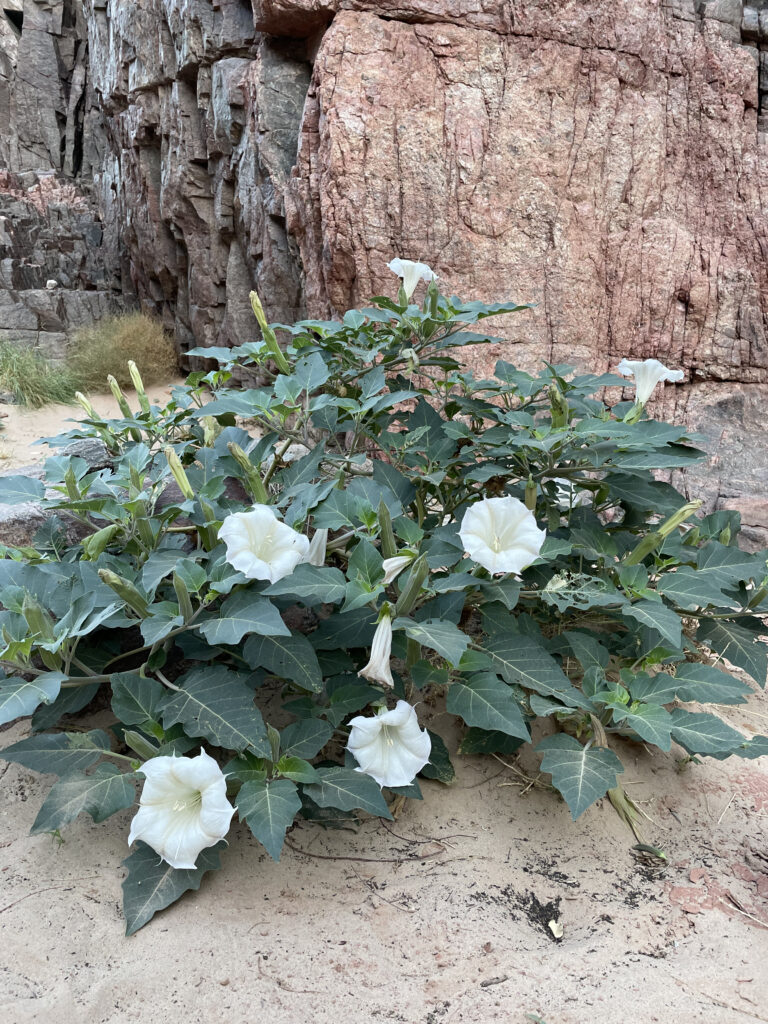The question we hear most often is: “What do I need in my day bag today?” The easiest answer? Be like a Boy Scout: Always be prepared.


With spring fast approaching, the plants in the Grand Canyon are beginning to awaken! The canyon is home to a variety of fascinating plants, many of which bloom during the spring. Below are some of the most commonly seen flowers in this iconic landscape:
One of the largest of the Grand Canyon flowers, Sacred Datura blooms with large, white flowers on dark green shrubs. These flowers bloom at night. While they are stunning to look at, be cautious—these flowers contain a toxic, hallucinogenic substance that can be fatal to humans if ingested. The Sphinx moth is immune to this toxin and feeds on their sweet nectar. Watch these flowers in the evening or early morning to see these fascinating moths!

One of my personal favorites, perhaps because it matches our company color—orange! These vibrant orange flowers grow in clusters on grass-like plants, and with enough moisture, they can bloom throughout the summer. You can find them growing in the higher elevations of the canyon, typically in sandy, rocky flats.

These striking red flowers stand out in the Grand Canyon, often seen growing in tributaries throughout the area. You’ll frequently find them near Elves Chasm and Deer Creek. What’s particularly interesting is that they sometimes grow directly out of the cliff walls next to flowing waterfalls, creating a beautiful contrast of colors.

The Grand Canyon is home to many varieties of cactus, each offering a unique set of flowers in different shades of pink, red, and yellow. While the flowers share a similar shape and size, they are stunning in their variety. Unlike the other Grand Canyon flowers mentioned here, some of these flowers are followed by fruit! Just be careful—like the plant itself, the fruit have thorns!

While not as commonly seen, the Century Plant is one of the most impressive blooms in the canyon. These plants bloom only once in their lifetime—typically every 20 to 40 years. The plant’s base resembles that of an agave, and when it’s ready to flower, it sends up a tall stalk that can reach up to 10 feet in height. As it blooms, the stalk becomes covered in clusters of little yellow flowers, making it a remarkable sight to behold.

The best time to see a variety of Grand Canyon flowers is in the spring! Check out our trip options in May 2025 to go flower gazing this summer!
Rafting Reviews from Hatch Guests Hatch has received some stellar feedback for the start of 2025! If you’ve ever wondered what the guest experience is like on a Grand Canyon rafting trip with Hatch, check out the great rafting reviews we’ve gotten this year:...
6 Reasons Hatch Was Selected for Newsweek's Best Whitewater Rafting Adventures Who provides the best whitewater rafting experience out there? According to Newsweek’s readers, Hatch does! That’s right—Hatch River Expeditions was one of 10 rafting outfitters chosen as...
June is one of the most popular months for rafting in the Grand Canyon, here are a few reasons many of our guests decide to go in June!